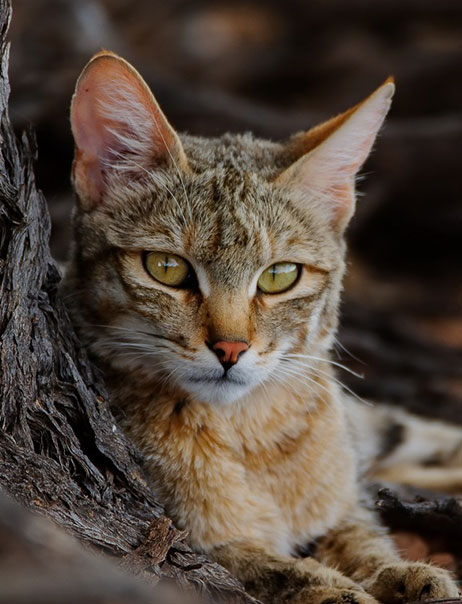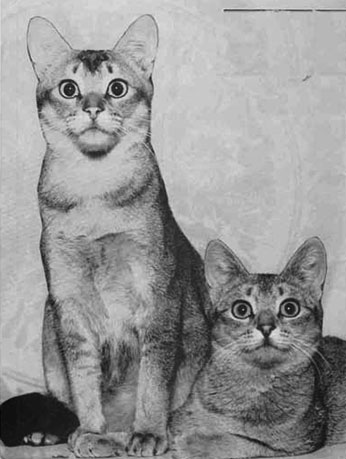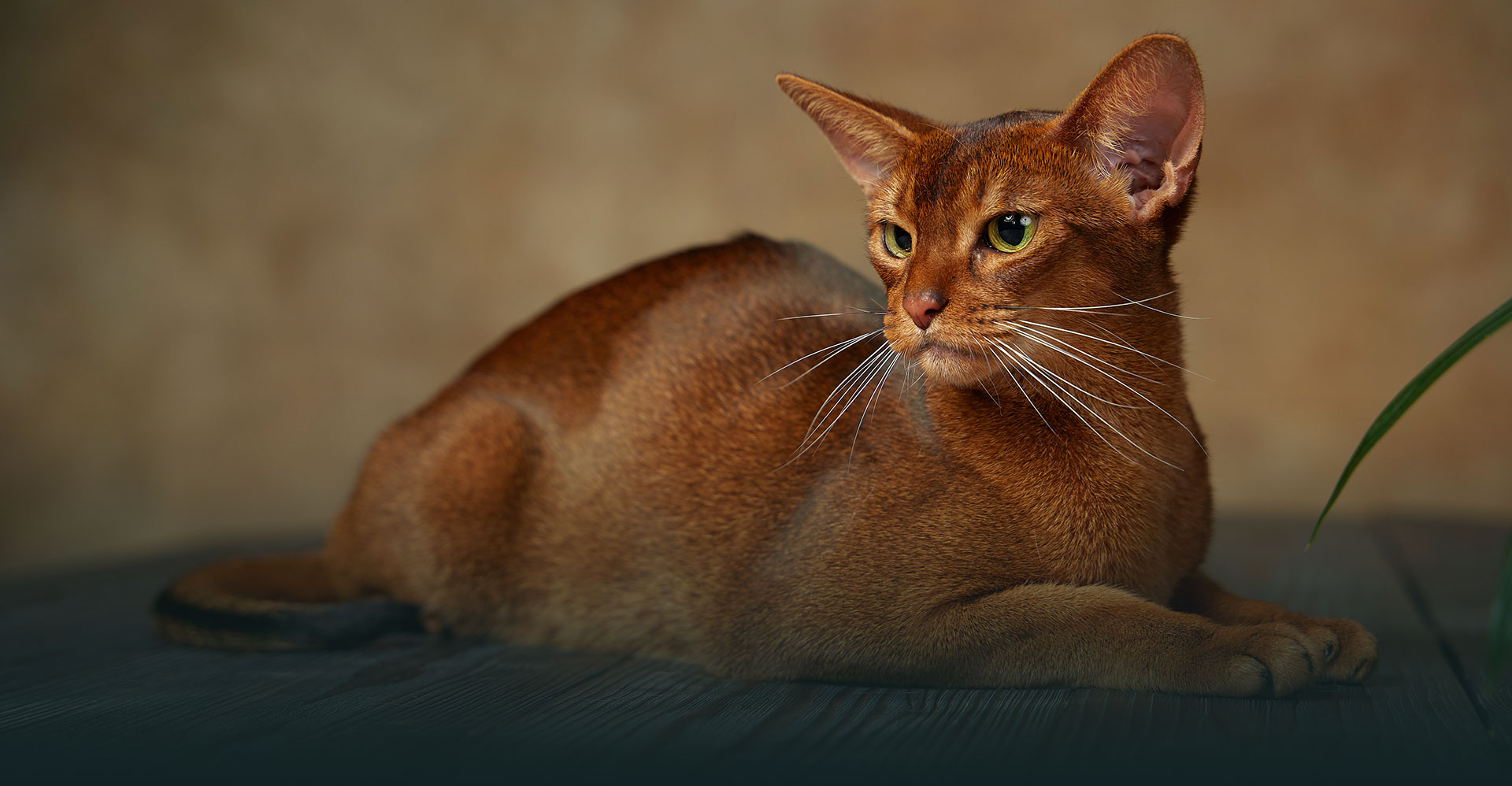
Abyssinian cat who is it?
Breed origin, colors, health and nutrition
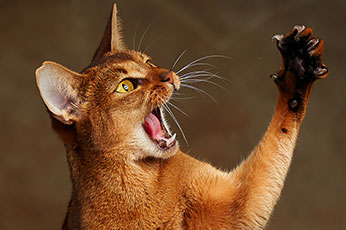
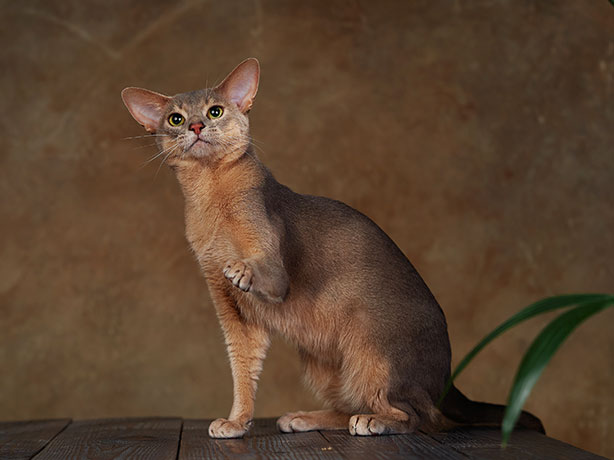
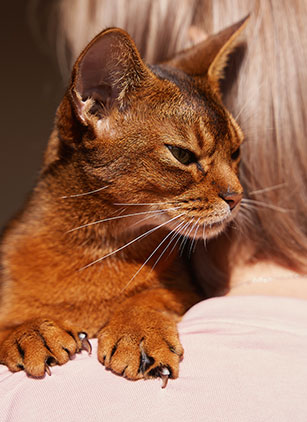
Abyssinian cats are eternal energizers, little “monkeys” who take part in all household chores and will not leave you indifferent.
Abyssinians are incredibly curious. They have to look, taste and smell everything. The owner should be prepared for the fact that this cat will always be suddenly nearby. But the role of an outside observer is not interesting to it. It will actively participate in everything, poke its paws and nose, pushing away the owner himself. Sometimes such excessive activity can be annoying, but it is impossible to re-educate an Abyssinian.
This is perhaps the most energetic cat breed in existence. They are on the move all the time - either playing, or "helping" the owner, or exploring their territory. They easily find something to do, instantly, like children, switching from one to another.
This is perhaps the most energetic cat breed in existence. They are on the move all the time - either playing, or "helping" the owner, or exploring their territory. They easily find something to do, instantly, like children, switching from one to another.
Where did the Abyssinians come from
There are several versions of the origin of the Abyssinian cat breed, which are to some extent plausible, but at the same time contain very controversial points. So choose which one do you like most.
According to one of the versions, the progenitor of the Abyssinian cats was the Zula cat, brought from Ethiopia, at that time called Abyssinia. According to another version, Abyssinian cats are very similar to the Egyptian images of sacred cats and it was believed that the homeland of these cats is not Ethiopia, but Egypt. Some researchers argue that the cat brought to England and exhibited under the name Abyssinian was not a domestic cat, but a tamed wild cat. It is also hypothesized that the ancestor of the breed was not exported from Africa, but from Southeast Asia. And, finally, it is believed that the breed was bred on the basis of English aboriginal cats.
According to one of the versions, the progenitor of the Abyssinian cats was the Zula cat, brought from Ethiopia, at that time called Abyssinia. According to another version, Abyssinian cats are very similar to the Egyptian images of sacred cats and it was believed that the homeland of these cats is not Ethiopia, but Egypt. Some researchers argue that the cat brought to England and exhibited under the name Abyssinian was not a domestic cat, but a tamed wild cat. It is also hypothesized that the ancestor of the breed was not exported from Africa, but from Southeast Asia. And, finally, it is believed that the breed was bred on the basis of English aboriginal cats.
How Abyssinians have changed in 100 years
Over the past hundred years, the breed has significantly changed its appearance: the cats have become a little smaller and more graceful, the skeleton has become lighter, the ears are larger. New color variations have been added, and the classic ruddy color has become noticeably "warmer". In 1963, a new color was recognized - sorrel. The blue color was recognized in 1984, the fawn color - in 1995 as experimental and in 2000 as full.
In the United States, Abyssinian cats are among the five most popular breeds, but in Russia this breed is still quite rare. Abyssinian cats appeared in Russia in the 1990s; at first, cats brought from Europe predominated. The wild-colored cat Tabiti`s Lancelot, representing the first generation of American Abyssinians in Russia, was of great importance for the development of the breed.
Abyssinian colors
Currently, 4 main colors of Abyssinian cats have won worldwide recognition.
These colors are recognized in all felinological systems.
Ruddy Color
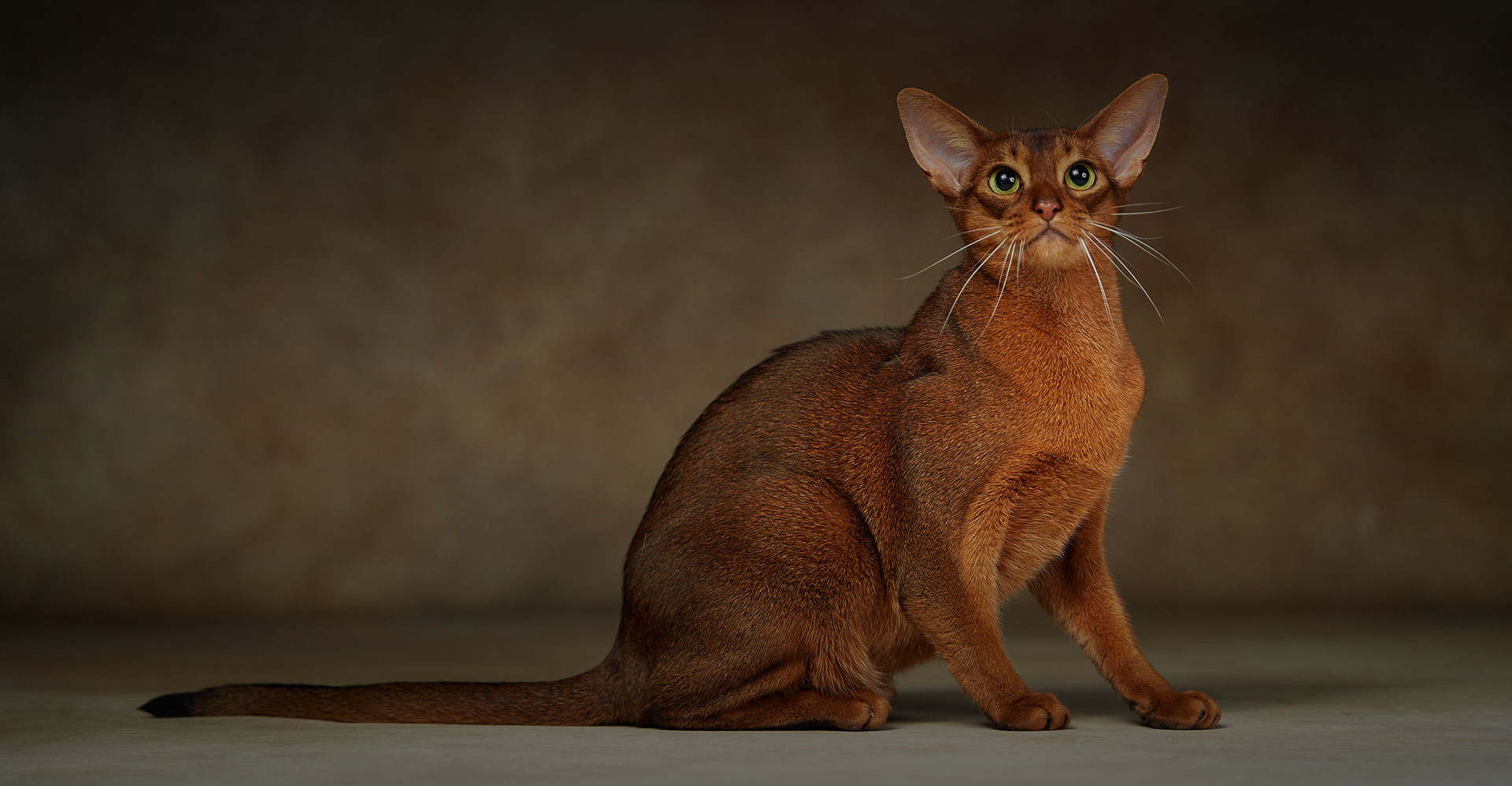
Bright orange-brown or ruddy coat color with a characteristic texture. Satin, tight to the body, elastic to the touch, with a glossy sheen, short but long enough to accommodate two or three dark ticking stripes along the length of the hair.
Ticking
Evenly distributed over the body, without forming a pattern, any stripes or necklaces. Stripes from black zones and zones of reddish-brown color alternate.
Paw pads
Black or less often dark brown with black fur between the toes
Eye outline
The eyes are gold, hazel, copper or green. Outlined with a thin dark line in the ticking color with a slight highlighting of the fur around the eyes.
Undercoat
The undercoat, lower body, ribcage and inner paws are evenly colored bright orange
Nose leather
Brick red in varying degrees of intensity, with black or dark brown edging.
Tip of tail
A dark brown line along the spine (dorsal strap) ends with a jet-black tail tip without any rings.
Blue Color
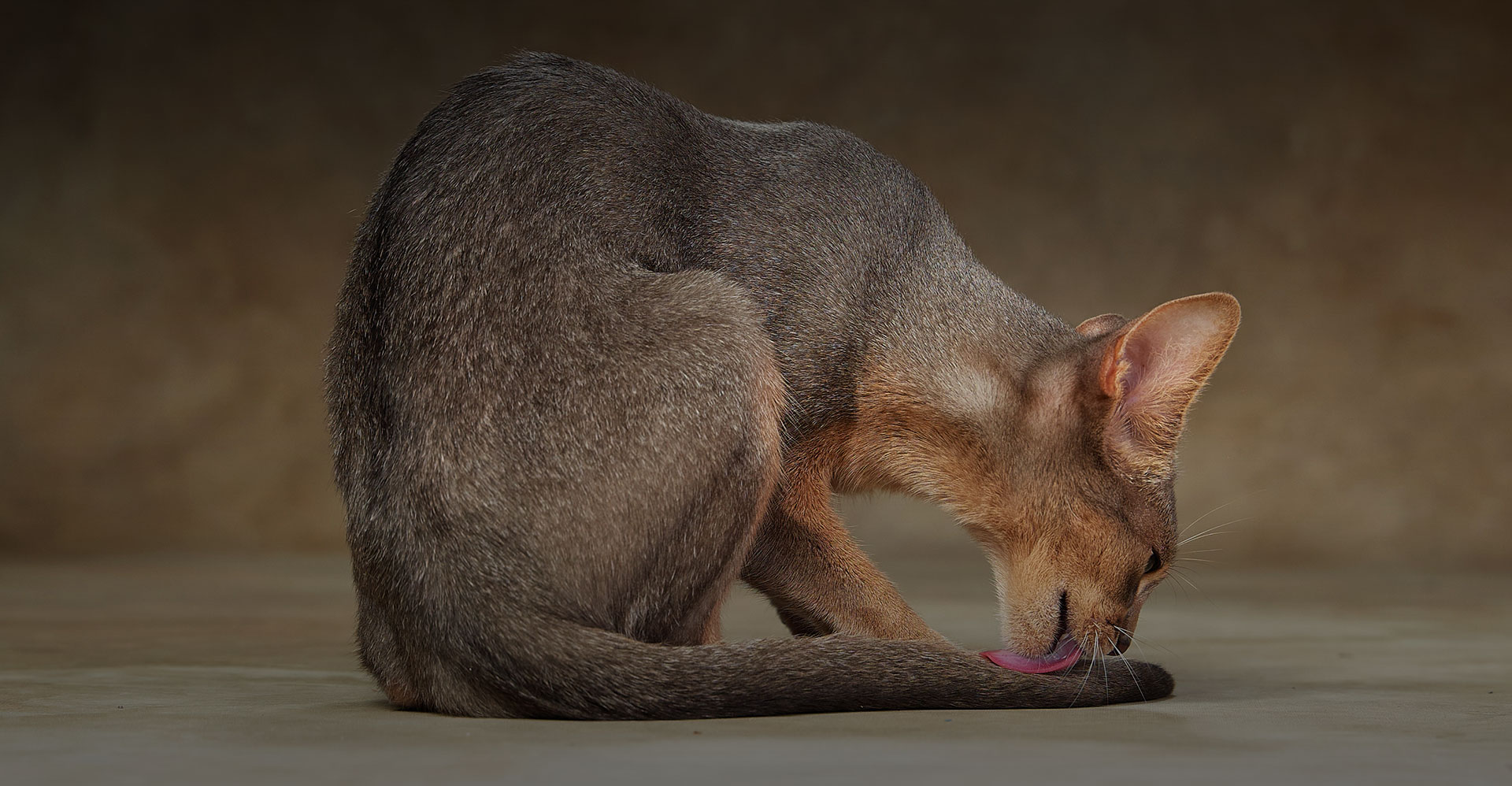
Juicy light cream or beige coat color with blue-gray zones with a characteristic texture. Satin, tight to the body, elastic to the touch, with a glossy sheen, short but long enough to accommodate two or three dark ticking stripes along the length of the hair.
Ticking
Evenly distributed over the body, without forming a pattern, any stripes or necklaces. Stripes of various shades of slate gray alternate.
Paw pads
Mauve with slate gray fur between the toes.
Eye outline
The eyes are gold, hazel, copper or green. Outlined with a thin dark line in the ticking color with a slight highlighting of the fur around the eyes.
Undercoat
The undercoat, lower body, ribcage and inner paws are uniformly colored in warm pink-beige (apricot) color.
Nose leather
Withered rose colors of varying intensity with bluish-gray edging.
Tip of tail
A reddish-brown line along the spine (dorsal strap) ends with a chocolate tip of the tail without any rings.
Sorrel Color
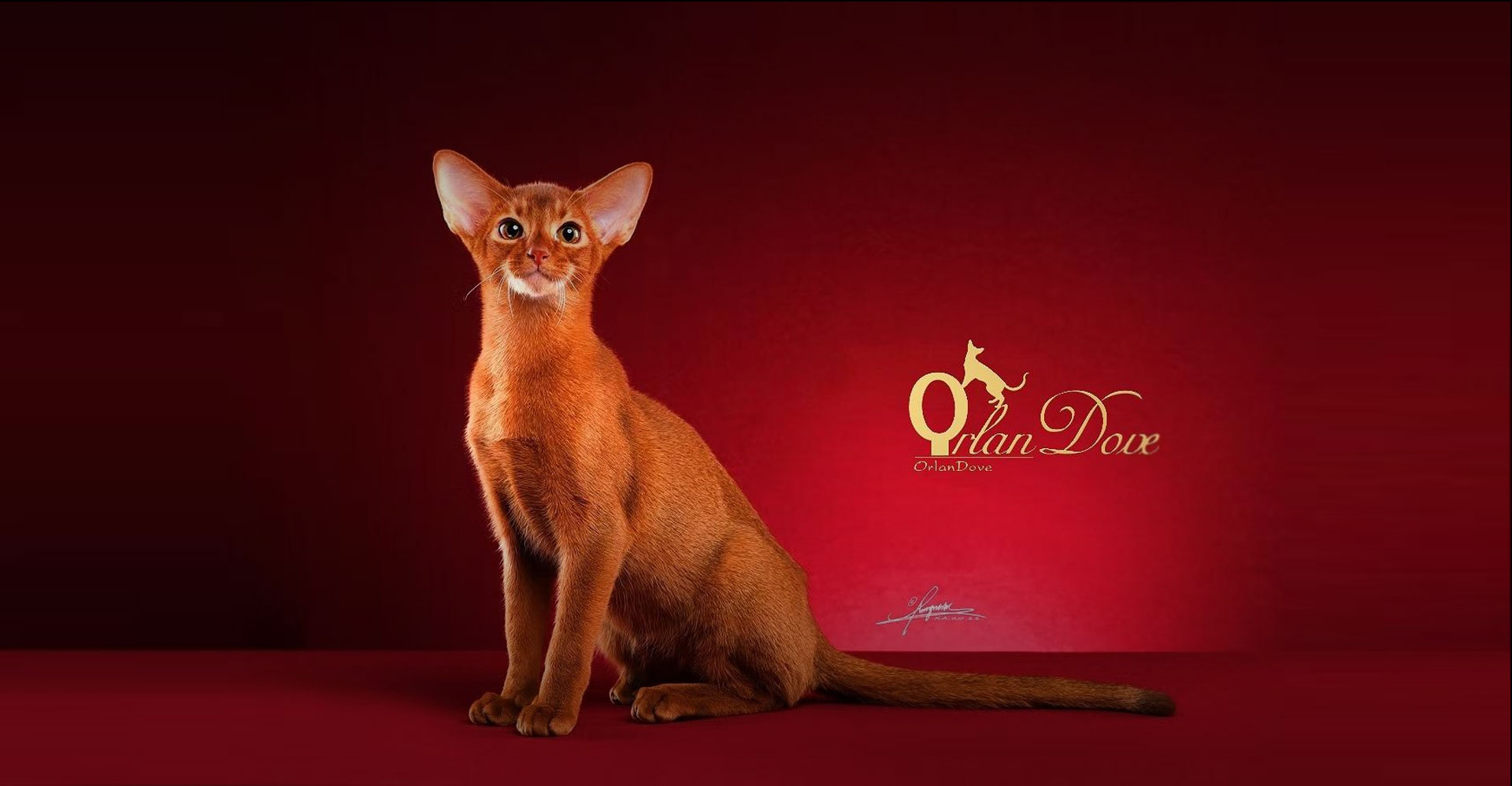
A bright copper-red, orange or cinnamon coat with a distinctive texture. Satin, tight to the body, elastic to the touch, with a glossy sheen, short but long enough to accommodate two or three dark ticking stripes along the length of the hair.
Ticking
Evenly distributed over the body, without forming a pattern, any stripes or necklaces. Stripes of intense rusty-brown and reddish zones alternate.
Paw pads
Pink or pale pink with chocolate brown fur between the toes.
Eye outline
The eyes are gold, hazel, copper or green. Outlined with a thin dark line in the ticking color with a slight highlighting of the fur around the eyes.
Undercoat
The undercoat, lower body, ribcage and inner side of the paws are evenly colored in a juicy reddish brown color.
Nose leather
Hot pink to pale pink with brick red edging.
Tip of tail
A line along the spine of a dark gray color (dorsal strap) ends with a slate gray tail tip without any rings.
Fawn Color
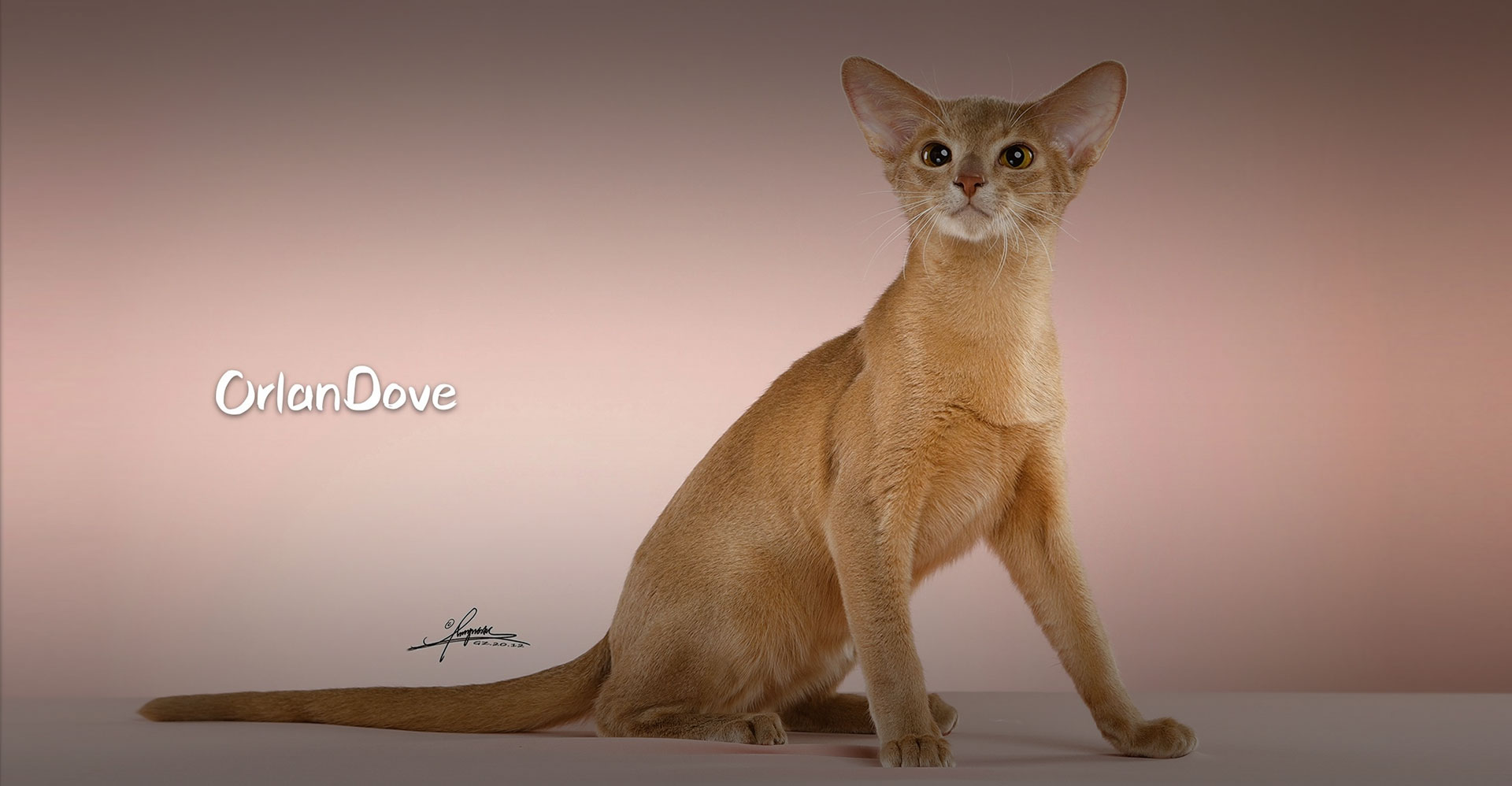
Light cream, light sandy or pinkish coat color with a characteristic texture. Satin, tight to the body, elastic to the touch, with a glossy sheen, short but long enough to accommodate two or three dark ticking stripes along the length of the hair.
Ticking
Evenly distributed over the body, without forming a pattern, any stripes or necklaces. Stripes of light and dark creamy beige alternate.
Paw pads
Light pink or pale pink with cocoa-beige fur between the toes.
Eye outline
The eyes are gold, hazel, copper or green. Outlined with a thin dark line in the ticking color with a slight highlighting of the fur around the eyes.
Undercoat
The undercoat, lower body, ribcage and inner paws are uniformly pinkish-beige.
Nose leather
Pale pink or salmon color with pinkish dark cream or lilac edging.
Tip of tail
A dark pink and beige line along the spine (back strap) ends with a cocoa-colored tail tip without any rings.
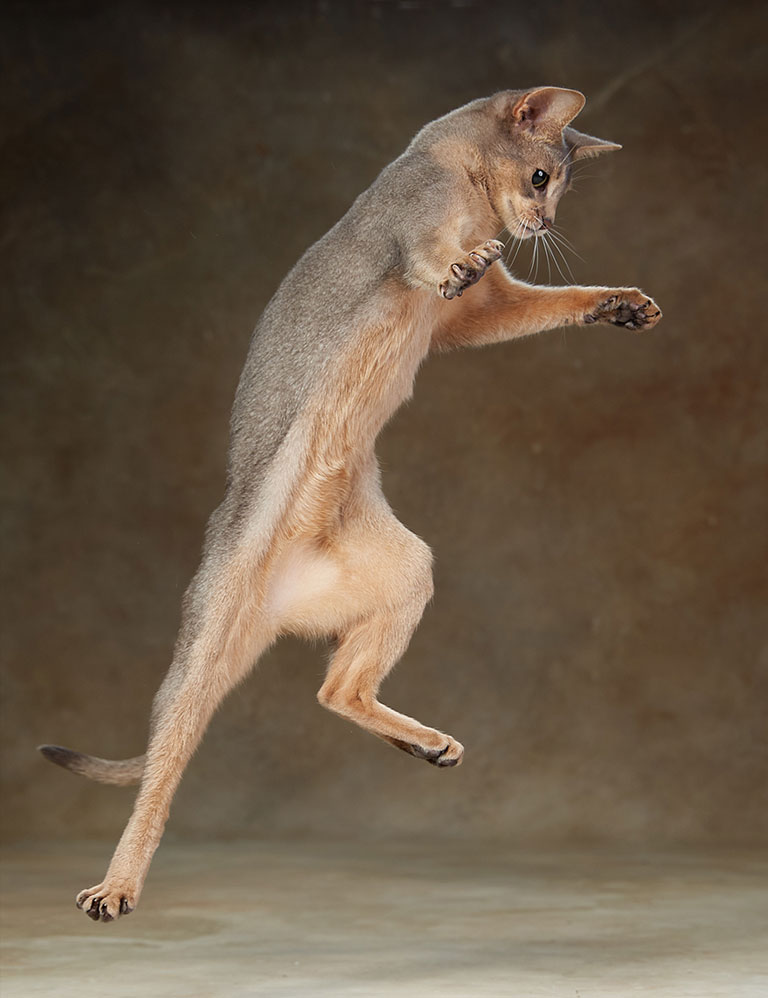
Health
Abyssinian cats are a fairly healthy breed. These are very active animals, distinguished by longevity and vitality. Even as adults, they remain as active and playful as little kittens. Not a single cat breed is immune from viral diseases, but, unfortunately, there are genetic diseases that Abyssinians are prone to - Progressive Retinal Atrophy (PRA rdAc) and Erythrocyte Pyruvate Kinase Deficiency (PK def). Our cats and kittens are not carriers of genetic and especially dangerous viral diseases (FeLV, FIV, FCoV). At the request of our clients (at their expense), before selling a kitten, we give him the necessary tests in a certified veterinary laboratory. The results of the research are sent to the future owner in electronic form immediately after receiving by the breeder.
More about health


Nutrition
Abyssinian cats, like any other feline, need adequate nutrition. It can be either a complete dry food and canned food of a super-premium or holistic class, as well as balanced raw meat and bone mixes. Our Abyssinians are fed the Prime Italian food range Farmina Natural & Delicious. They willingly eat these feeds, are in excellent condition and mood. Of course, you can feed your pet with any other food, but it must be at least super-premium. Also, when feeding dry food, you need to make sure that the cat is consuming enough water. Our cats drink from a special fountain-drinker, which attracts them with water constantly circulating through the filter.
More about nutrition

Kittens for you
Meet the youngest representatives of our Novisenya cattery - our Abyssinian kittens. Perhaps one of the available kittens is waiting for you.






